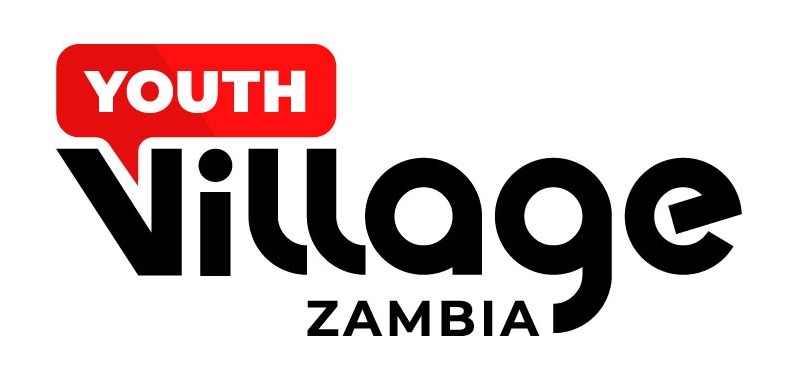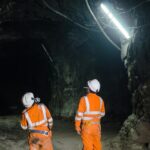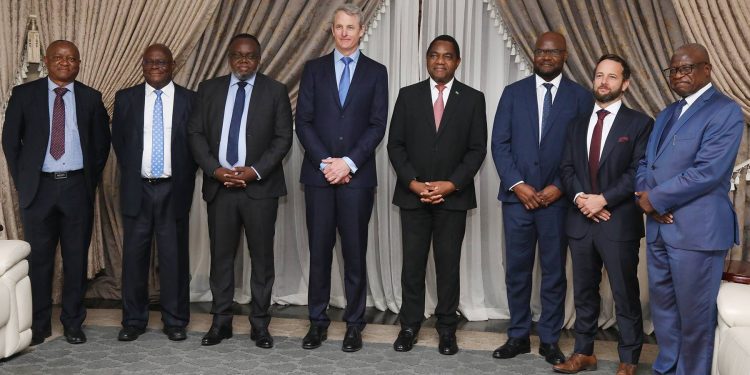First Quantum Minerals Ltd., under the leadership of Chief Executive Tristan Pascall, has successfully delivered the 2024 Copperbelt High-Resolution Airborne Survey to Zambia’s Ministry of Mines, marking a significant milestone for the country’s mining industry. This groundbreaking survey, which was officially handed over on January 20, 2025, promises to significantly enhance Zambia’s understanding of its mineral wealth, particularly copper, which remains a cornerstone of the nation’s economy.
President Hakainde Hichilema, who commended the initiative, highlighted its importance in enabling Zambia to unlock its full mining potential. “This critical mapping initiative provides a deeper understanding of Zambia’s resource endowment, benefitting not only the Ministry of Mines but the Zambian people as a whole,” President Hichilema said in a statement. He also expressed his gratitude to First Quantum Minerals for their leadership and collaboration, emphasizing the government’s commitment to utilizing the country’s vast mineral resources for economic development and prosperity.
The survey’s delivery comes at a time when Zambia’s mining sector is experiencing positive growth. According to Mines Minister Paul Kabuswe, Zambia’s copper production increased by 12% in 2024, reaching 820,670 metric tons, up from 732,580 tons in 2023. This uptick in output comes despite challenges, including electricity shortages triggered by a drought that disrupted hydroelectric power generation. Kabuswe credited the increase in production to recovery efforts at key mining operations.
This growth in copper production reflects optimism within the sector, which has become a central pillar of Zambia’s broader economic strategy. As Africa’s second-largest copper producer, after the Democratic Republic of Congo, Zambia is striving to triple its annual copper production to 3 million tons over the next decade. The increase in output has been driven by both domestic and international stakeholders, with Canadian mining giants like Barrick Gold and First Quantum Minerals scaling up their operations. In addition, India’s Vedanta Resources has committed $1.3 billion to revive Konkola Copper Mines (KCM), and U.S.-backed KoBold Metals has announced a $2 billion investment to develop a new copper mine in the country.
The Copperbelt High-Resolution Airborne Survey is expected to play a pivotal role in advancing these efforts. The survey provides crucial geological data that will help mining companies and the government identify new mineral deposits and optimize extraction methods, ensuring that Zambia’s mining industry remains competitive on the global stage. This data is also expected to increase investor confidence, paving the way for future investments and driving the country closer to its ambitious production goals.
As Zambia continues its push to enhance its mining sector, the government is focused on creating an investor-friendly environment that prioritizes sustainability, transparency, and long-term economic benefits. However, some concerns have been raised about the broader societal impacts of the mining industry, particularly regarding whether the benefits of increased copper production are adequately reaching the general population. There are ongoing discussions about the need for fair and effective taxation systems to ensure that Zambia’s citizens see a tangible return on the country’s natural resource wealth.
Despite these challenges, the handover of the Copperbelt High-Resolution Airborne Survey signifies a significant step toward addressing Zambia’s mining sector challenges. As the country moves forward, it remains determined to build a mining industry that can provide substantial benefits to its economy and its people, while also meeting global demand for copper, a key resource in the green energy transition.
In conclusion, the successful delivery of the Copperbelt High-Resolution Airborne Survey is a testament to the collaboration between Zambia’s government and the private sector. It represents a major leap toward unlocking the country’s full mining potential, ensuring a sustainable and prosperous future for the Zambian people.






